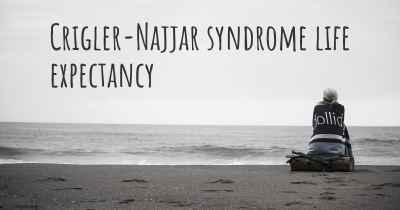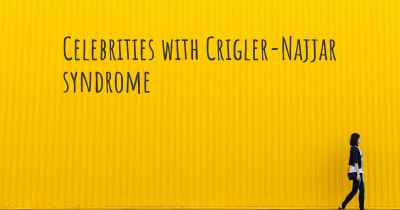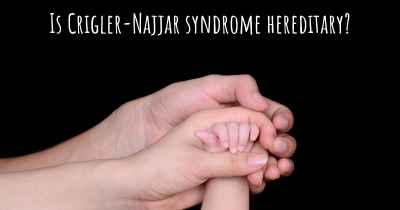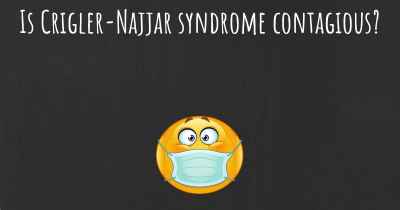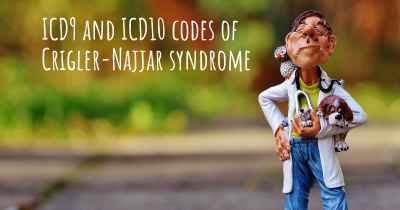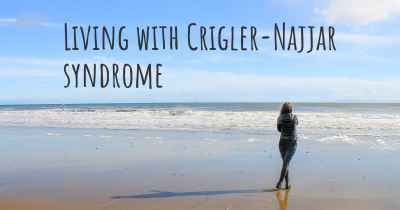What is the history of Crigler-Najjar syndrome?
When was Crigler-Najjar syndrome discovered? What is the story of this discovery? Was it coincidence or not?
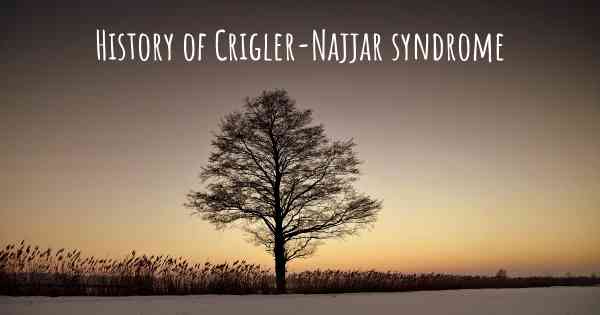
Crigler-Najjar syndrome:
Crigler-Najjar syndrome is a rare genetic disorder characterized by the inability of the body to properly process bilirubin, a yellow pigment produced during the breakdown of red blood cells. This condition leads to a buildup of bilirubin in the blood, resulting in a condition called hyperbilirubinemia. Crigler-Najjar syndrome is named after the two physicians who first described the disorder: John F. Crigler Jr. and Victor A. Najjar.
Discovery and Early Research:
The first documented case of Crigler-Najjar syndrome was reported in 1952 by Dr. John F. Crigler Jr., an American pediatrician. He described a patient, a 6-month-old girl, who presented with severe jaundice and neurological symptoms. Dr. Crigler recognized that the condition was distinct from other forms of jaundice and named it "familial nonhemolytic jaundice."
Later, in 1958, Dr. Victor A. Najjar, an American pediatrician, encountered a similar case and independently described the disorder. He coined the term "Crigler-Najjar syndrome" to honor Dr. Crigler's earlier work.
Types of Crigler-Najjar Syndrome:
There are two types of Crigler-Najjar syndrome: type 1 and type 2.
Type 1:
Crigler-Najjar type 1 is the more severe form of the syndrome. It is characterized by a complete absence or severe deficiency of the enzyme UDP-glucuronosyltransferase 1A1 (UGT1A1), which is responsible for conjugating bilirubin and making it water-soluble for excretion. Without this enzyme, bilirubin cannot be effectively eliminated from the body. Individuals with type 1 Crigler-Najjar syndrome typically develop severe jaundice shortly after birth and require lifelong treatment.
Type 2:
Crigler-Najjar type 2 is a milder form of the syndrome. It is caused by a partial deficiency of UGT1A1 enzyme activity. Individuals with type 2 Crigler-Najjar syndrome may not exhibit symptoms until later in life, often during childhood or adolescence. While the symptoms are less severe compared to type 1, they still require medical management.
Genetic Basis:
Crigler-Najjar syndrome is an autosomal recessive disorder, meaning that an affected individual must inherit two copies of the defective gene (one from each parent) to develop the condition. The gene responsible for Crigler-Najjar syndrome is called UGT1A1 and is located on chromosome 2.
Several mutations in the UGT1A1 gene have been identified in individuals with Crigler-Najjar syndrome. These mutations impair the production or function of the UGT1A1 enzyme, leading to the accumulation of unconjugated bilirubin in the blood.
Treatment and Management:
Currently, there is no cure for Crigler-Najjar syndrome. However, there are treatment options available to manage the condition and prevent complications.
Phototherapy:
The primary treatment for Crigler-Najjar syndrome is phototherapy. This involves exposing the skin to specific wavelengths of light, which helps convert unconjugated bilirubin into a water-soluble form that can be excreted by the body. Phototherapy is typically performed using specialized light-emitting devices or through exposure to natural sunlight.
Liver Transplantation:
In severe cases of Crigler-Najjar syndrome, liver transplantation may be considered. A liver transplant can provide a source of functional UGT1A1 enzyme, effectively curing the condition. However, transplantation is a complex procedure with associated risks and is not suitable for all individuals.
Research and Future Perspectives:
Advancements in genetic research have provided insights into the underlying mechanisms of Crigler-Najjar syndrome. Scientists are exploring gene therapy approaches to introduce functional UGT1A1 genes into affected individuals, potentially offering a long-term solution for the disorder.
Furthermore, ongoing research aims to develop new pharmacological treatments that can enhance the activity of the UGT1A1 enzyme or promote bilirubin excretion, reducing the reliance on phototherapy.
In conclusion, Crigler-Najjar syndrome is a rare genetic disorder characterized by the inability to process bilirubin, leading to hyperbilirubinemia. It was first described by Dr. John F. Crigler Jr. and Dr. Victor A. Najjar in the 1950s. The syndrome is divided into two types, with type 1 being more severe. The genetic basis of the disorder involves mutations in the UGT1A1 gene. While there is no cure, phototherapy and liver transplantation are available treatment options. Ongoing research offers hope for future advancements in the management of Crigler-Najjar syndrome.
